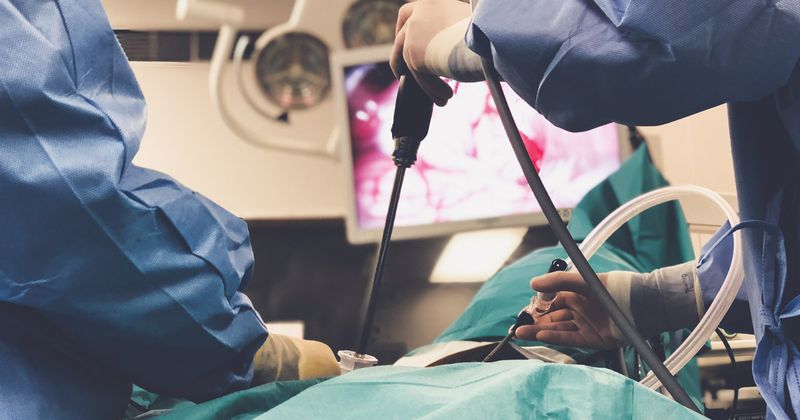The 'new normal' for endoscopic education during the COVID-19 pandemic
Due to COVID-19, Chicago and the entire state of Illinois went into lockdown mid-March. In our endoscopy unit, we transitioned to only doing emergent procedures and restricted access to all fellows to minimize personal protective equipment (PPE) use and number of people in the endoscopy unit. At the onset of the pandemic, it was difficult to estimate the availability of PPE, including the possibility of re-processing equipment such as masks. While we did not know how severely our hospital would be affected by COVID, given our location in a major urban city, we correctly anticipated a significant burden. In addition to limiting staff in the procedure room, we rotated the attending physicians and nursing staff, while the office staff worked remotely. These restrictions were maintained for 6 weeks until the end of April when the COVID numbers declined and Illinois public health officials approved opening up procedure units to allow for elective procedures.
Creative Ways to Teach Fellows
The lockdown period was devastating for our gastroenterology fellows, especially the advanced endoscopy fellow who only has 1 year of training to attain competency in a broad range of therapeutic procedures. The teaching limitations induced by COVID-19 inspired me to try to develop creative ways of teaching endoscopy. This was extraordinarily difficult because similar to surgery, when it comes to endoscopy, the trainees need hands-on experience that is hard to replace.

Given the challenge to transition the endoscopic education experience for fellows, I began a weekly “virtual endoscopy video rounds” to review videos of procedures and discuss indications and techniques. Other means of sharing procedures with fellows included recording and reviewing cases afterward and live streaming into an adjacent room while providing real time feedback. One of the most important aspects of teaching is the discussion between the attending and fellow over the intra-procedural decision-making process. This type of feedback could still continue even if the fellow was not holding the scope. While some hospitals have used simulator models, I worked with some of our industry partners to obtain realistic plastic models that allowed our fellow to become familiar with the set up and deployment of endoscopic devices.
Online Options for Endoscopy Education

Even before the COVID-19 pandemic, there was a shift toward using social media for learning purposes. The outbreak only accelerated that aspect and an increasing number of fellows across the country have started to use social media platforms (Twitter, LinkedIn, Instagram, YouTube, etc.) to exchange knowledge during this challenging time. For example, on Twitter, there have been GI fellow-initiated educational programs including a GI Journal Club (#GIJC), #ScopingSundays, and ASGE Endo Hangout for Fellows.
Moving beyond trainees, the major GI Societies (ASGE, ACG, AGA) have all converted their meetings to virtual formats and offered weekly online symposiums. Our own center has created CME webinars given by our faculty on various GI topics. There has been significant attendee participation during these online events because they allow for easy Q&A (many people feel more comfortable speaking up in this format) and can reach a broader audience from around the country and world.
Gastroenterologists have demonstrated their ability to adapt and navigate the changes brought on by this pandemic. Not only have we adjusted our endoscopic practices, but we have also adapted the ways we educate our trainees and colleagues. These changes ultimately have provided an opportunity to rethink and improve current standards as we move into our “new normal.”
- Reference:
- Siddiqui UD, et al. The New Virtual Reality: Advanced Endoscopy Education in the COVID-19 Era. Digestive Diseases and Sciences. 2020;65:1888-1891.
